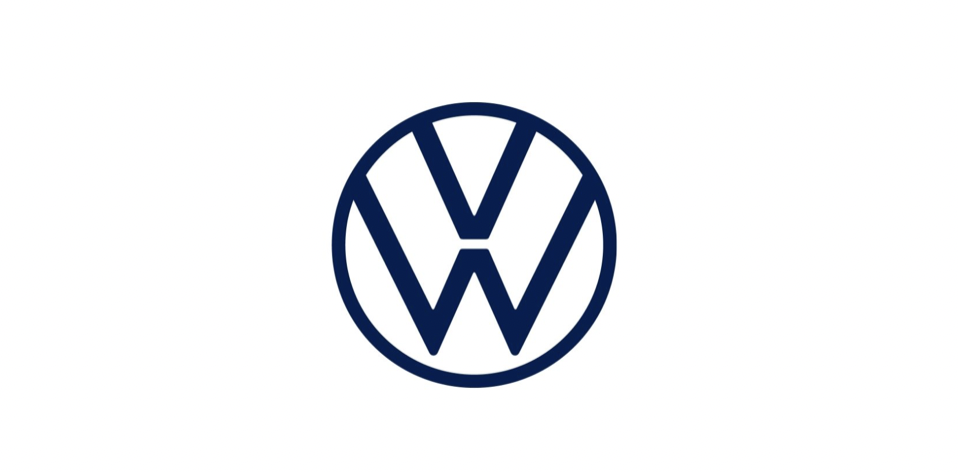(Cover image source: Volkswagen AG)
On March 15th, Volkswagen presented its battery and charging technology roadmap for 2030 at its first Power Day, with the goal of lowering the cost and complexity of the batteries.
From the released contents, Volkswagen’s Power Day did indeed have a taste of Tesla’s Battery Day.
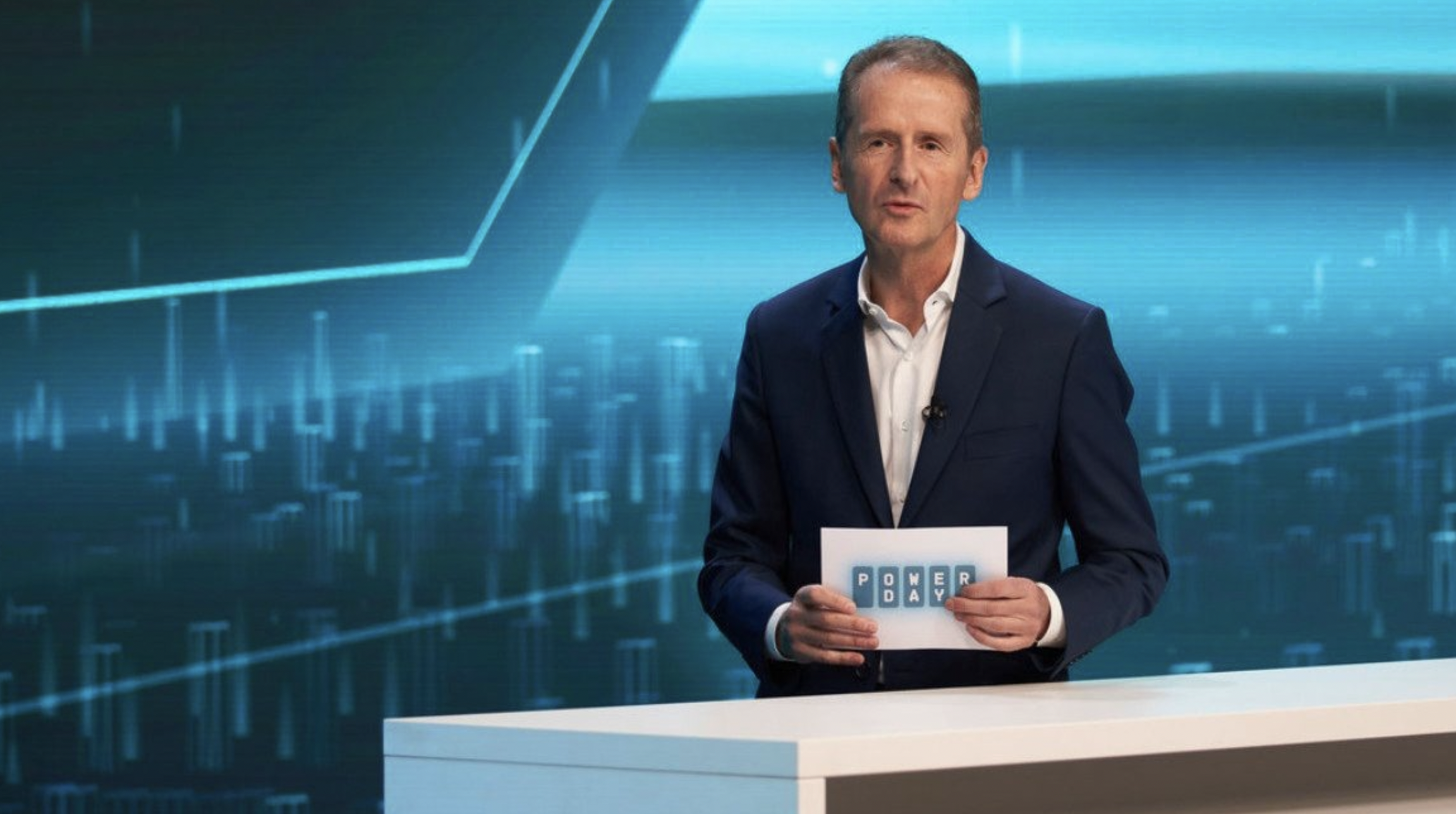
The specific plans for the Volkswagen Group are:
-
Standardized battery specifications can reduce battery costs by up to 50%;
-
Establish six super factories with a total capacity of 240 GWh to ensure battery supply through cooperative mode;
-
The “Northvolt Ett” factory in Sweden will be expanded, and production capacity is planned to be expanded to 40 GWh;
-
Salzgitter will be the second largest factory in the plan, with a production capacity of up to 40 GWh;
-
Strengthen cooperation with suppliers to recycle up to 95% of raw materials. By value chain integration, further cost reduction can be achieved;
-
In Europe, the charging network will expand five times with partners to 18,000 fast charging points;
-
In terms of energy ecological system construction, energy management will be determined as a new business area;
-
Seek cross-investment with partners to maintain strategic financial goals.
About the battery
At Power Day, “increased production,” “cost reduction,” and “standardization” were the keywords for the battery.
- “Increased production”
As the sales of electric vehicles increase, the shortage of power batteries has become the “culprit” that restricts the sales of electric vehicles. In order to solve the problem of battery supply, the Volkswagen Group plans to establish six 40 GWh battery factories globally within 10 years, with a total production capacity of 240 GWh, to meet the future demand for power batteries.
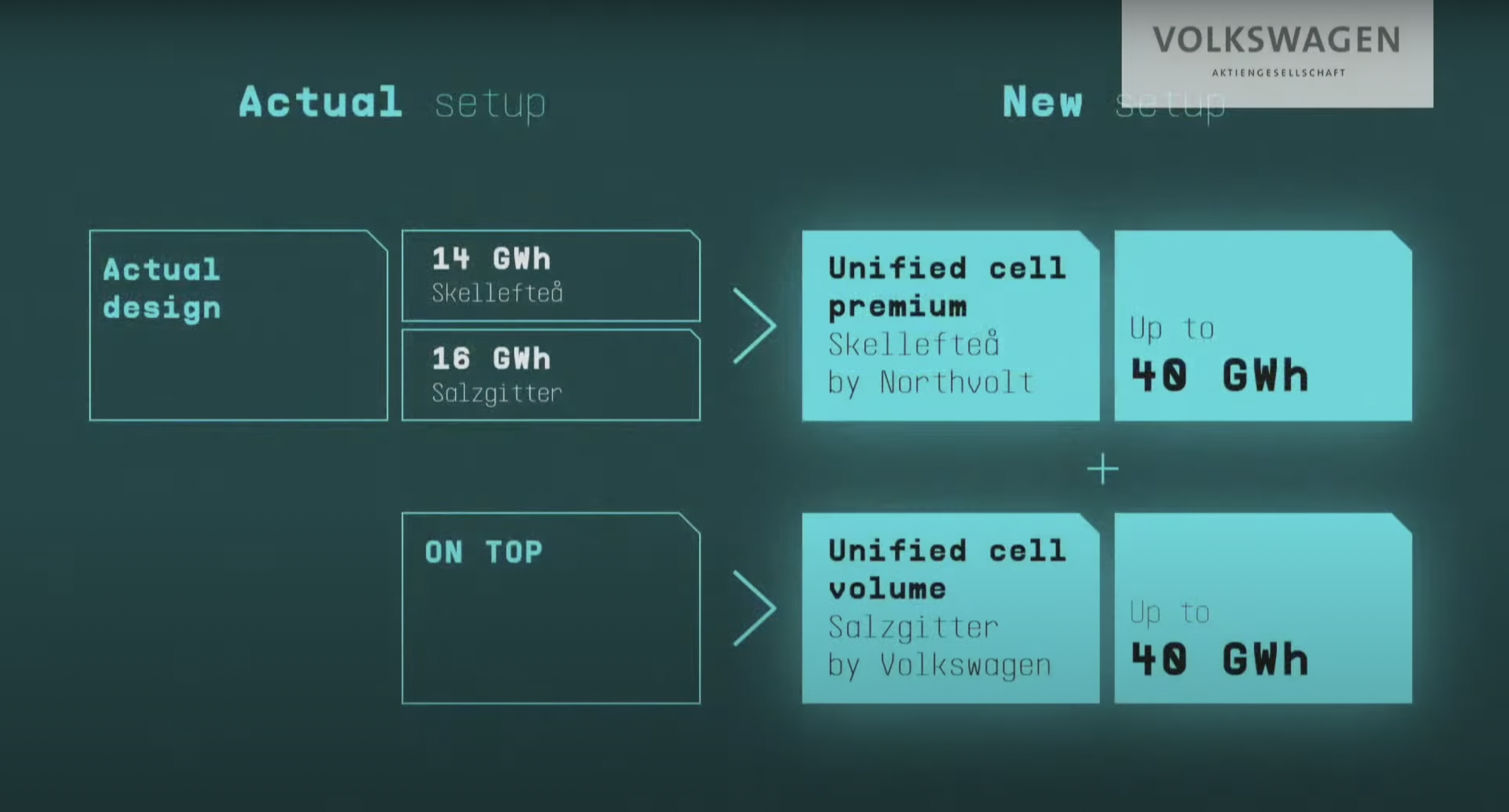 # Volkswagen’s Plan for Battery Production
# Volkswagen’s Plan for Battery Production
Volkswagen plans to expand its battery production with several factories across Europe, aiming to localize the supply chain and reduce costs. Here are the details:
-
Cooperation with Northvolt in Sweden
Volkswagen’s first battery factory will be built in Skellefteå, Sweden, in cooperation with the battery manufacturer Northvolt. The “Northvolt Ett” factory is planned to have a capacity of 40 GWh and will produce high-end battery cells. The factory is scheduled to start operating in 2023. -
Factory in Salzgitter, Germany
The second battery factory will be built in Salzgitter, Germany, with a capacity of 40 GWh. Production is expected to start in 2025. -
Factory in Spain or France
Volkswagen plans to build a 40 GWh battery factory in either Spain or France, scheduled to start operation in 2026. -
Factory in Eastern Europe
A fourth factory will be built in either Poland or the Czech Republic, with production scheduled to start in 2027.
By building battery factories in various countries, Volkswagen aims not only to increase production capacity but also to localize the supply chain and reduce costs.
Cost Reduction
To reduce costs, Volkswagen plans to integrate the supply chain and implement wet smelting to achieve 95% recycling of raw materials.
While the number may sound daunting, Volkswagen can only recycle up to 82 kg of raw materials from a battery weighing 400 kg. However, considering the large-scale production of the battery factories, this level of recycling can still contribute to a significant cost reduction. The battery recycling factory in Salzgitter has already started operating this year.
Standardization
Standardization of the battery’s structure, chemical formula, and raw materials is essential for reducing costs. However, as Volkswagen has many brand subsidiaries, this poses a challenge as each brand has its own unique development requirements.
Volkswagen’s plan for battery production aims to increase efficiency and reduce production costs while providing sustainable and high-quality battery products.In order to achieve the best scale benefits, Volkswagen expects that by 2023, 80% of its vehicle models will be equipped with standardized battery cells, while the remaining 20% will use dedicated batteries designed independently. It has been emphasized that the use of standardized battery cells in 80% of vehicle models is a fundamental requirement that cannot be compromised.
The ultimate goal is to reduce costs: the battery cell design will be reduced by 15%, manufacturing processes by 10%, electrode materials by 20%, and battery systems by 5%. This will ultimately result in a cost reduction of more than 50% for batteries.
Volkswagen showcased a new type of battery with a boxy shape set to enter mass production in 2023. Currently, Panasonic, LG Chem, and SKI all use cylindrical or pouch cell batteries, while the boxy-shaped battery would be beneficial for Chinese battery manufacturers such as Contemporary Amperex Technology (CATL) and BYD.
Volkswagen has also optimized the structure of the battery system, adopting a module-free battery pack (CTP) and an integrated electric chassis (CTC) to reduce structural complexity and achieve better lightweight performance and longer range.
About Charging
Volkswagen believes that the core competitiveness of batteries, charging facilities and battery management lies in the construction of high-speed charging networks to improve the user experience.
Volkswagen plans to concentrate on the construction of charging networks in the three major regions of Europe, the United States and China.In the United States, there are currently more than 500 Supercharging stations operated mainly by Electrify America. The plan is to build up to 800 Supercharging stations and 3,500 Supercharging piles by the end of 2021, with a planned 17,000 Supercharging piles by 2025.
In Europe, Volkswagen relies on the original charging network service provider, Ionity, and a new partnership with British Petroleum, Iberdrola (Spain), and Enel (Italy). The plan is to operate 18,000 Supercharging piles by 2025.
About China
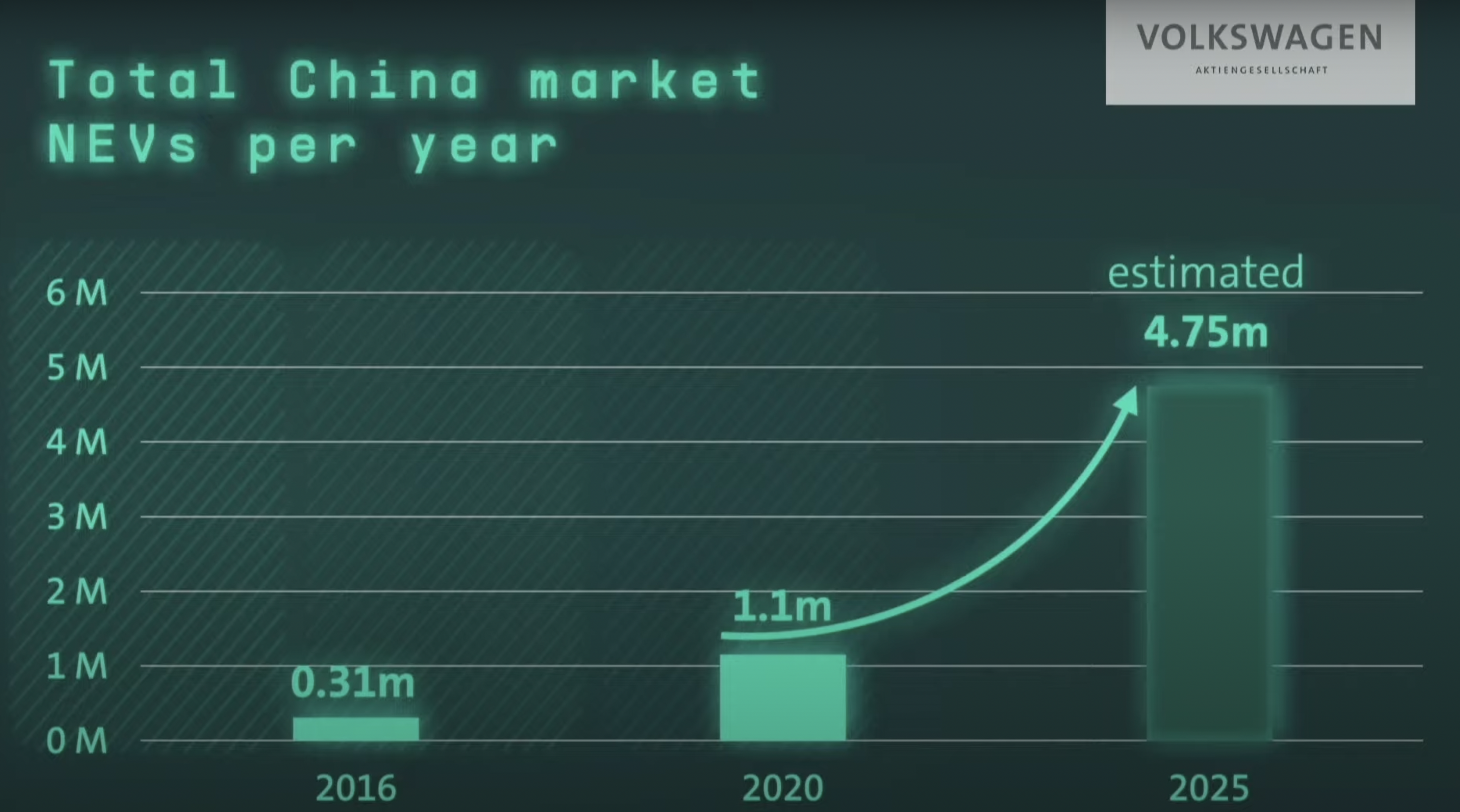
Volkswagen mentioned that by 2025, China’s annual sales of pure electric vehicles will reach 4.75 million, and 15 MEB models will be launched to meet the market demand. In China, Volkswagen hopes to achieve an electric vehicle sales volume of over 2 million by 2025 and achieve a target of 12 million by 2030.

In terms of charging, Volkswagen is aiming to build 17,000 Supercharging piles through CAMS, which was established with FAW, JAC, and Star Charge. The goal for this year is to establish over 500 Supercharging stations and 6,000 Supercharging piles in eight cities.
By 2025, Volkswagen plans to build over 17,000 charging piles in China, with all of them starting at 120 kW, including high-power Supercharging piles starting from 180 kW to 300 kW.
Easter Egg
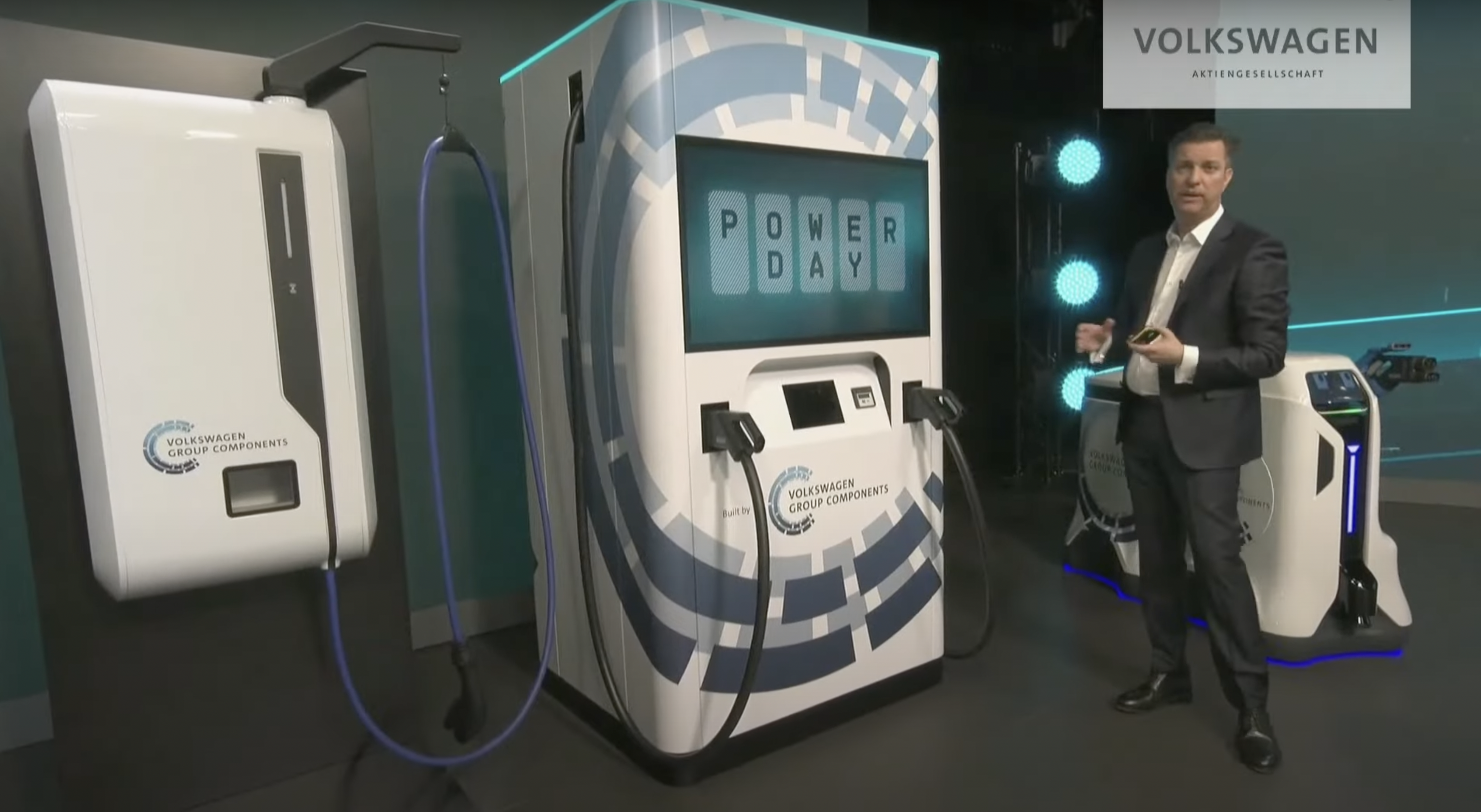
Finally, Volkswagen also introduced some “Easter Eggs”, such as charging robots, charging piles, and wall-mounted charging boxes.The daily scenario is that the charging robot can be connected to a household energy storage box and the built-in battery can provide power to the household, be moved to the side of a car for charging, and accept reverse charging from the vehicle. For example, in the case of the ID.3, its battery can support the household energy storage box for more than 5 days.
Conclusion
Volkswagen AG’s “Accelerate” Strategy is unfolding, as if Volkswagen has turned the constraints of traditional car companies into fertilizer for transformation, and is quickly catching up with Tesla in front.
🔗Source: Volkswagen AG, YouTube Volkswagen News
This article is a translation by ChatGPT of a Chinese report from 42HOW. If you have any questions about it, please email bd@42how.com.
